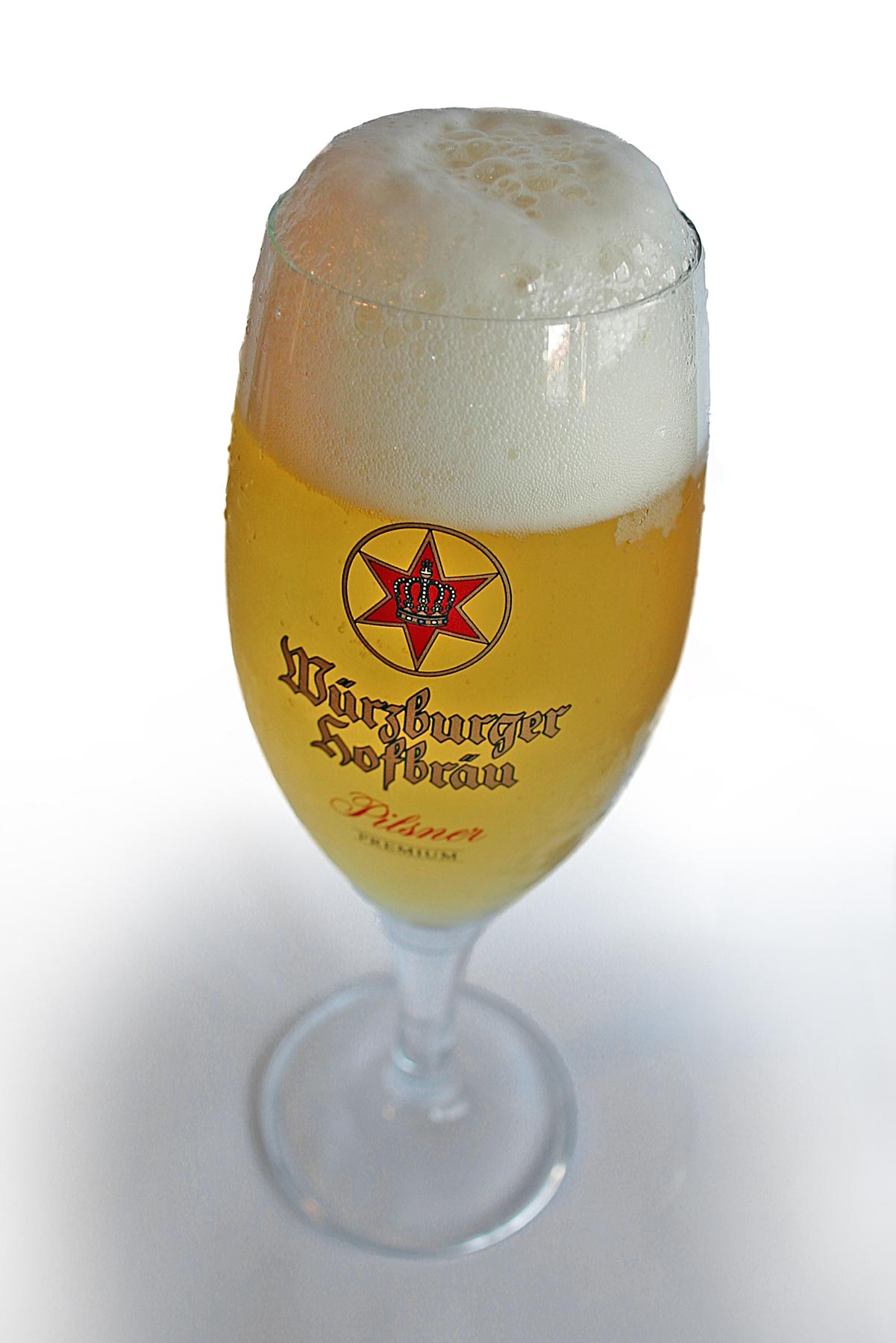 |
| Germans: good for cars, fabulous beer and great expressions like Doppelgänger |
I love a good beer. On a hot day there is nothing like a good beer. In Finland the Finnish beer is strange and most of the time you never get any head. Part of it is from the lack of good bartenders and also possibly the difference in beer compared to Guinees or Kilkenny.
The head on a pint of beer is primarily stabilized by adsorbed proteins and polypeptides derived from proteins in the malt. Lipid transfer protein 1 originating from barley stands out as the most important component relevant for the formation of foam. In malt, LTP1 is present in a foam inactive folded form. During the wort boiling LTP1 loses its 3D structure. The denaturated unfolded form is surface active (REF). The ethanol (usually around 5%) in beer helps the foam to form because it lowers surface tension of the liquid from 72 dynes to around 40 dynes, producing smaller gas bubbles caused by carbon dioxide (or in Guinness's case nitrogen). The bubbles rise to the top of the glass forming a nice foam. A well poured beer with the right composition the foam should go directly to to the bottom. The foam prevents the carbon dioxide from escaping the liquid. The mouthfeel and the creamy sensation of the beer is preserved which is why Germans use steins.
If you do not see so much foam on the beer it may be caused by a couple of different reasons. Firstly the beer could be completely flat lacking carbon dioxide . If the beer is sitting there a while it goes flat. However, the beer might also lack foam if the glass is dirty. If they cleaned it with soap the surfactants from the soap can leave a trace residue on the inside of the glass. Actually any residue soap, detergent, grease and wax can kill foam formation and retention actually attack the foam on a head of beer. You might see the bubbles coalescing at the dirty spot and bursting (much like the roughness of the mentos in the previous repost). If the surfactants from the soap attach to the surface on the bubbles the surface tension on the bubbles is lowered too much and they will burst. Thus the foamy head disappears leaving the beer looking and tasting "flat". For these reasons, do not use regular liquid household dish washing detergents for glassware. They are fat-based and will leave a slight oily film on the glass. This causes beer to go flat quickly. Use a detergent designed specifically for beer glass cleaning. It must be low-suds, odor-free and non-fat. After washing, thoroughly rinse beer glasses and, if possible, air-dry them. In Helsinki there are a few Czech bars that only clean the glass with cold water. These bars usually pour the beer really well.
P.S. The other day I heard that 'Einstein invented the foam on beer.' I questioned this because I think it is bull. Beer was invented long before Einstein and it is pretty pure due to 1516 purity laws in Germany which made it so there were only a couple of ingredients in beer. So no added ingredients.
P.S.S. Yesterday I reposted something from another blogger on the mentos. It was mentioned briefly what might happen when you add a surfactant or grease to the solution. If you add soap to coke it will kill all the fizz so the physical reaction will not happen.
 Logging you in...
Logging you in...